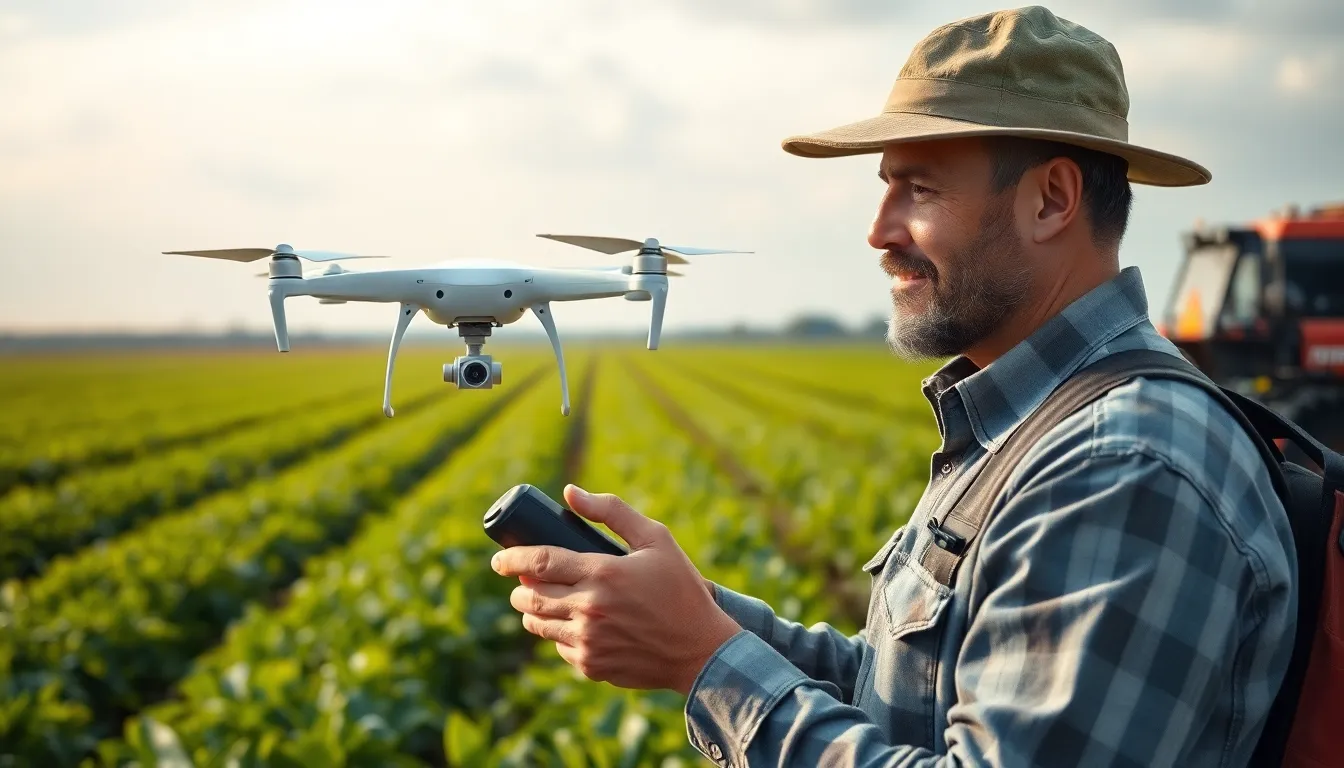In a world where food is no longer just a source of sustenance but a canvas for creativity, innovative food science and emerging technologies are taking center stage. Imagine a future where your dinner plate is crafted by robots and your dessert is printed in 3D. It sounds like something out of a sci-fi movie, but these advancements are becoming reality faster than you can say “molecular gastronomy.”
Table of Contents
ToggleInnovative Food Science and Emerging Technologies
Innovative food science is driving significant advancements in culinary practices. Artificial intelligence enhances food safety by monitoring conditions in real-time, ensuring quality control throughout the supply chain. Robotics streamline restaurant operations, allowing for quick meal preparation and consistent quality.
3D printing technology is revolutionizing food production, enabling the creation of intricate designs and customized flavors. Chefs utilize molecular gastronomy to explore unique flavor profiles and textures, challenging traditional cooking techniques. Bioprinting, a cutting-edge approach, emphasizes the potential to create lab-grown meat and sustainable food alternatives.
Fermentation technology is gaining attention, producing a variety of foods and beverages with enhanced flavors and nutritional benefits. Innovations in packaging, such as edible films, reduce waste while extending shelf life. Nutraceuticals, food products with health benefits, are increasingly incorporated into daily diets to combat chronic illnesses.
Vertical farming represents a sustainable solution, utilizing advanced nutrient management systems to grow crops efficiently in urban environments. Precision agriculture employs drones and sensors to optimize yields while minimizing resource usage. Smart kitchens equipped with IoT devices measure, monitor, and adjust cooking processes for perfect results every time.
The ongoing evolution of food science fosters creativity and sustainability. Emerging technologies promise to shape the future of food, providing exciting new experiences for consumers while addressing global food challenges.
Applications in Food Production

Innovative food science and emerging technologies significantly enhance food production methods. These advancements lead to improved efficiency and sustainability across the industry.
Precision Agriculture
Precision agriculture improves crop yields by utilizing advanced technologies. Drones and sensors collect real-time data on soil conditions and crop health. This data empowers farmers to make informed decisions about irrigation, fertilization, and pest management. With precision farming techniques, resource utilization becomes more efficient, reducing waste and environmental impact. Moreover, satellite imagery allows for detailed analysis of larger areas, enabling timely interventions and maximizing output.
Biotechnology in Food Development
Biotechnology plays a crucial role in food development through genetic modifications and fermentation processes. Scientists create genetically modified organisms (GMOs) to enhance nutrient profiles, increase resistance to pests, and improve crop resilience. Fermentation technology enhances flavors and nutritional benefits in various products, from yogurt to beverages. Additionally, biotechnological advancements enable the production of lab-grown meats, offering sustainable alternatives to traditional animal farming. These innovations address food security concerns and contribute to a more resilient global food system.
Food Preservation Techniques
Innovative food science significantly enhances food preservation techniques, ensuring food safety and longevity.
Cryogenic Freezing Advances
Cryogenic freezing technologies utilize extremely low temperatures to rapidly freeze food items, preserving flavor and nutritional value. This method prevents the formation of large ice crystals, which can damage cell structures and degrade texture. Companies increasingly adopt nitrogen and argon for cryogenic processes, leading to improved quality in frozen meals and ingredients. For instance, seafood and fruits often retain their freshness and vibrant color even after long-term storage. Recent advancements also emphasize energy efficiency and reduced costs in cryogenic freezing, making it a practical solution for various food producers.
Smart Packaging Solutions
Smart packaging solutions integrate technology to enhance food preservation and safety. These packages often include sensors that monitor temperature, humidity, and gas levels, providing real-time data on food condition. Many smart packages incorporate time-temperature indicators, signaling the freshness and quality of products. Active packaging materials can also release antimicrobial agents to further prolong shelf life. Brands increasingly use these innovative solutions to reduce food waste and enhance consumer trust in product safety. As a result, smart packaging plays a critical role in the modern food industry, promoting sustainability and freshness.
Enhancing Nutritional Value
Innovative food science enhances the nutritional profiles of various products through advanced techniques and technologies.
Fortification Innovations
Fortification techniques significantly improve the nutrient content of staple foods. Micronutrients such as vitamins and minerals get added to products like cereals and milk, helping combat deficiencies. Nutritional yeast contains B vitamins and contributes to vegan diets. Iron fortification in flours bolsters anemia prevention, particularly in developing regions. New methods, including nanoencapsulation, increase nutrient bioavailability. These evolutions ensure that essential nutrients reach consumer diets effectively, addressing health issues on a global scale.
Functional Foods
Functional foods offer more than basic nutrition; they promise health benefits. Probiotics in yogurt support gut health, while omega-3 fatty acids found in certain fish promote heart wellness. Market offerings now include fortified beverages enriched with plant extracts aimed at reducing inflammation. Antioxidants play a role in minimizing oxidative stress found in berries and dark chocolates. Emerging technologies, such as genetic engineering, assist in developing crops with enhanced functional properties. These advances provide accessible options for consumers seeking to improve their overall well-being.
Sustainability and Environmental Impact
Innovative food science significantly influences sustainability and environmental practices, focusing on reducing waste and exploring alternative protein sources.
Reducing Food Waste
Innovations in food preservation and packaging work towards minimizing food waste across the supply chain. Techniques like smart packaging utilize sensors to monitor freshness, enabling retailers and consumers to manage stock effectively. Companies are implementing apps that connect excess food with local charities, reducing landfill contributions while feeding communities. Processes such as fermentation extend the shelf life of products, allowing for greater consumption of foods that might otherwise be discarded. Governments are also supporting initiatives aimed at improving food recovery systems, bolstering efforts to decrease overall waste.
Alternative Protein Sources
Alternative protein sources are gaining traction as sustainable solutions to conventional meat production. Lab-grown meat provides a viable option, drastically reducing the environmental impact associated with traditional farming. Companies are investing in plant-based proteins, which require fewer resources and generate lower greenhouse gas emissions. Innovations in insects as a protein source are emerging, showcasing their high efficiency in converting feed into protein. Additionally, seaweed cultivation presents an interesting avenue for producing nutrient-dense food while absorbing carbon from the ocean. Each of these options demonstrates the potential to reshape dietary habits while addressing food security issues.
The landscape of food is undergoing a remarkable transformation driven by innovative food science and emerging technologies. As culinary creativity flourishes, advancements like robotics and 3D printing are redefining how meals are prepared and enjoyed.
These technologies not only enhance efficiency and safety but also promote sustainability through smarter agricultural practices and alternative protein sources. The focus on nutrition and waste reduction underscores a commitment to healthier diets and environmental responsibility.
As the food industry continues to evolve, the integration of these innovations will play a pivotal role in shaping the future of food, addressing global challenges while delighting the palate.






